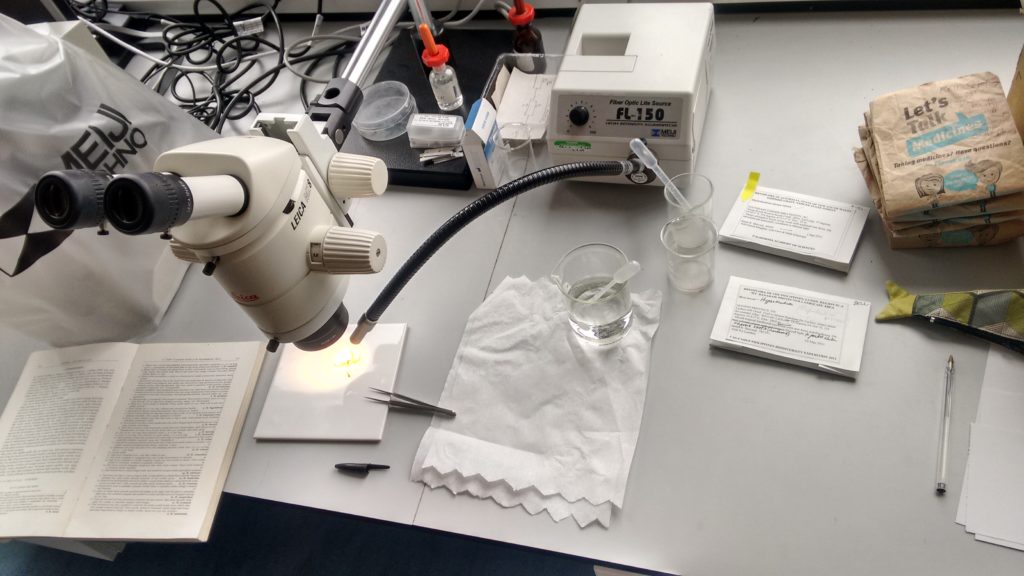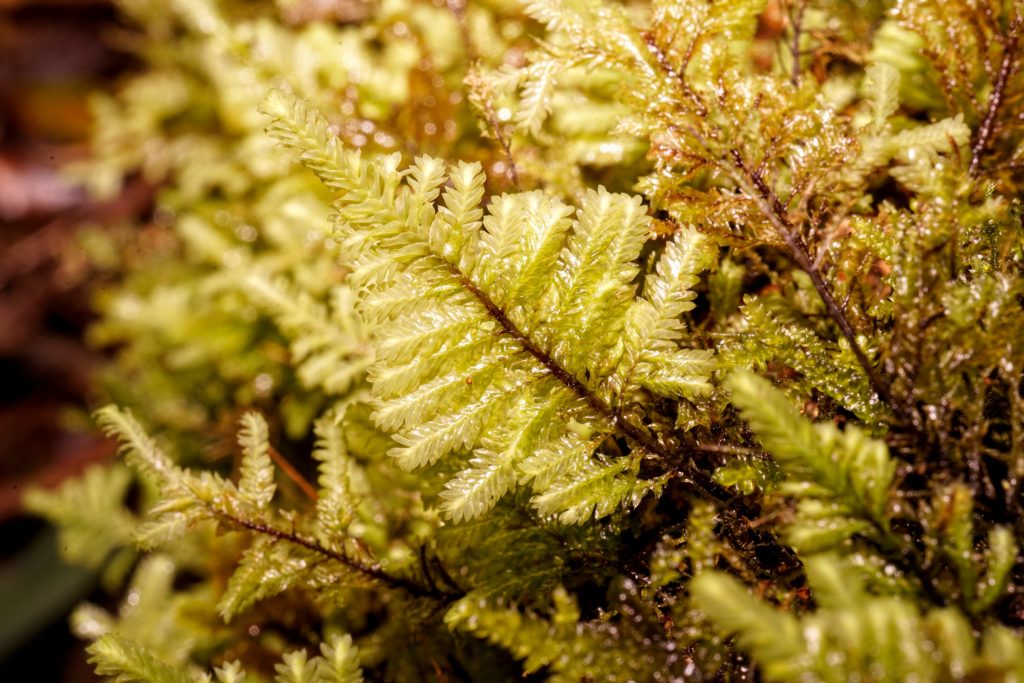The following blog posts on moss evolution are written by Diego Sánchez-Ganfornina (early career researcher).
Migrations, extinctions, rainforests and climate change: the pressures and situations that led tree mosses to grow all around Australasia and subsequently, the world.
Bryophytes (the group that encompasses mosses, liverworts and hornworts) fill us with a sense of wonder if only we pause to observe them: easily overlooked, these tiny plants just at the edge of our perception have fascinating stories and surprising relationships to the habitats they grow in. Join me, Diego Sánchez-Ganfornina (early career researcher and educator) through a series of Botanics Stories that showcase the results of the recent work I’ve published together with Neil Bell, bryophyte specialist at RBGE, who supervised me and then collaborated in the ensuing project. Our research challenges some common misconceptions about bryophytes and highlights some exciting news about Australasian mosses along the way.

An example of how we set up to observe bryophytes in our herbarium. Their herbarium conservation and observation strategies are a little different to most flowering plants’, given their small size. Credit: Diego Sánchez-Ganfornina
All land plants evolved from a common ancestor related to a specific group of green algae, and it’s likely that bryophytes retain many of the features that were found in the earliest land plants. The way they grow is unique amongst land plants in that they hardly ever have a well-developed vascular system (which in other plant groups channels water and nutrients through the body of the plant), instead absorbing water and transporting nutrients directly over their outer surfaces and using a cell-to-cell mechanism. This also is the main reason for them being so small: mosses require a large surface area to volume ratio to allow absorbed water to reach all tissues rapidly and lack the hard cell walls of vascular tissue which give support in vascular plant groups. Although tiny, bryophytes often challenge our perception of them as fragile: they are capable of surviving in near-zero water conditions for much longer proportionally than any other land plant, and then spring back from apparent death. This capacity has allowed them to survive in habitats that may have sudden downpours but also dry spells, and often you can find bryophytes in environments where no other plant can grow.

A snowbed habitat which can be found at the top of the Cairngorm plateau. This habitat with near-permanent snow beds fosters a diverse group of very rare bryophyte species, growing where no other plants could: they only grow for the short spans of time when the snow retreats from bare ground. Credit: Neil Bell
Because of these remarkable characteristics, and because they are often seen as similar or equivalent to “early land plants”, people often think of bryophytes as small, ancient relicts of the past with primitive features that aren’t as effective as those of ferns, conifers or flowering plants. This is, however, a big misconception. Nearly half of all mosses, as well as a large proportion of liverwort species, have only evolved in the last few million years, well after the dinosaurs’ demise. There are conifers and flowering plant species that have remained unchanged for far longer than many bryophyte species! We must change the way we view bryophytes: the mosses we see nowadays come from an old evolutionary line, but the way they now look and the particular types of species they have differentiated into may be relatively recent developments.
One large group of mosses is particularly prominent in many environments: the pleurocarps. This group comprises around half of all extant moss diversity, and represents a clade (a group of species that all share a common ancestor) which expanded in a sudden burst of diversity in the last 150 million years – from the late Jurassic to early Cretaceous onwards, at the start of the end of the reign of the dinosaurs. Pleurocarps often present a complex branching habit and have longer lifespans than other colonist or “chancer” species. They can sometimes even resemble miniature trees, with an initial longer stem with specialised leaves, and then an array of smaller, greener branches that ramify in turn. Pleurocarps are a group that Neil Bell and other experts have focused on throughout their careers, and a previous Botanics story tells about a fieldwork expedition and some more detail about specific New Zealand mosses.

Lopidium coninnum, a pleurocarp moss. Credit: Neil Bell
Most pleurocarp species, and even most genera and families, have evolved relatively recently, yet they are mosses, an ancient lineage of land plants. This is why concepts such as “new” and “old”, or “advanced” and “primitive”, are quite misleading and best avoided when describing the evolution of these lovely plants. Another way to think about the relative ages of groups is in terms of when they diverged (separated) from each other. So in future posts you’ll see us considering or comparing divergence times – without associating to them the concepts of preserved, old/ancient, or newly acquired characters.
Having now understood the background to moss evolution and how they might not be just as we take them to be, join us in our next blog post on moss evolution as we interpret phylogenies, and we discover how pleurocarps have evolved over the last few million years!
